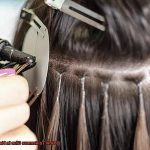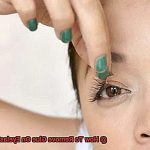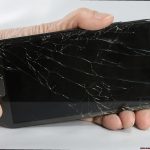Do you find yourself struggling to remove pesky glue marks from your glassware?
Whether it’s from a DIY project or an accidental spill, removing glue from glass can be a daunting task. Not only does it detract from the glass’s pristine appearance, but it also poses a safety risk for objects like cups and plates.
But don’t throw in the towel just yet. With the right tools and techniques, you can easily remove glue from glass without causing any damage.
In this blog post, we’ll walk you through safe and effective methods for removing stubborn adhesive residue. We’ll cover various approaches, including using household items like vinegar and baking soda, as well as specialized products such as glue removers and rubbing alcohol.
Additionally, we’ll provide tips on how to prevent future glue marks on your glass surfaces and take necessary precautions when handling chemicals. By following our simple yet effective methods, you can restore your glassware, windows, and other objects to their former glory.

So let’s dive into the world of removing glue from glass together and say goodbye to sticky residues once and for all.
Identifying the Type of Glue
Contents
Don’t worry – with the right techniques and materials, you can safely and effectively remove any type of glue.
But first, it’s crucial to identify the kind of glue you’re dealing with.
Different types of glue require different approaches to effectively remove them from glass surfaces.
Whether it’s super glue, hot glue, epoxy, or silicone adhesive, understanding the consistency and color of the glue is key to determining the best removal method.
Super glue is usually thin and clear, while hot glue is thick and opaque.
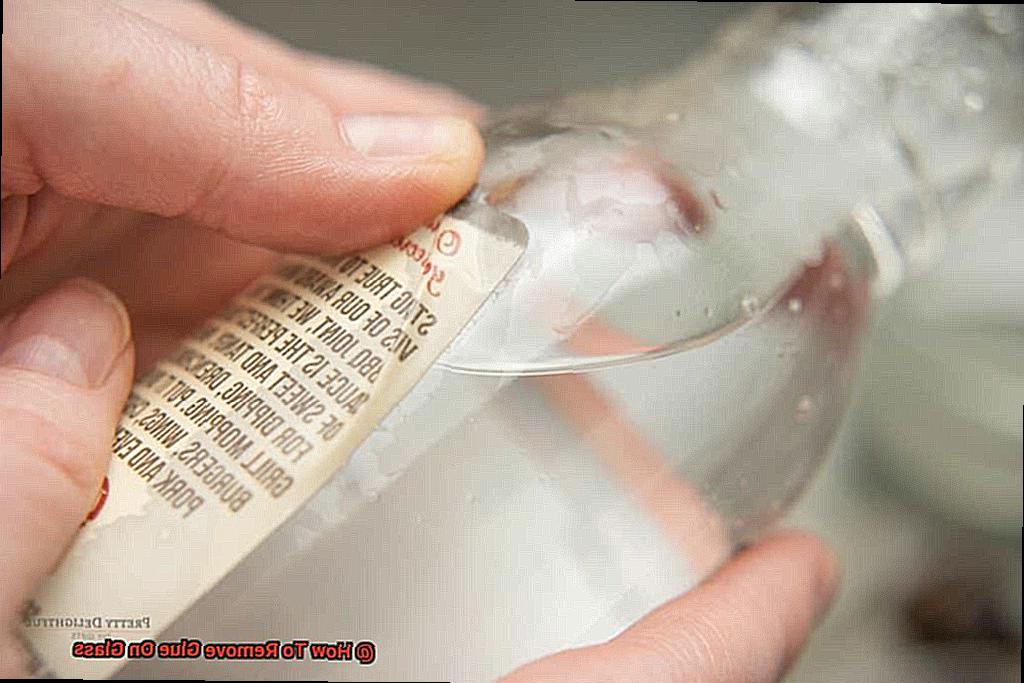
Epoxy glues are dark-colored and have a thick consistency, while silicone adhesive is typically clear and rubbery. You can also check the label or packaging of the product used for more information.
Once you’ve identified the type of glue, you can consider the appropriate removal method.
Solvents like rubbing alcohol or acetone can be effective in breaking down the adhesive properties of the glue. However, use these solvents with caution in a well-ventilated area as they emit strong fumes and can be flammable.
Another option is to use a scraping tool such as a razor blade or plastic scraper to gently remove the glue from the glass surface.
But use this method carefully to avoid scratching or damaging the glass. For more stubborn or larger areas of glue, a heat gun or hair dryer can help soften the glue before scraping it away.
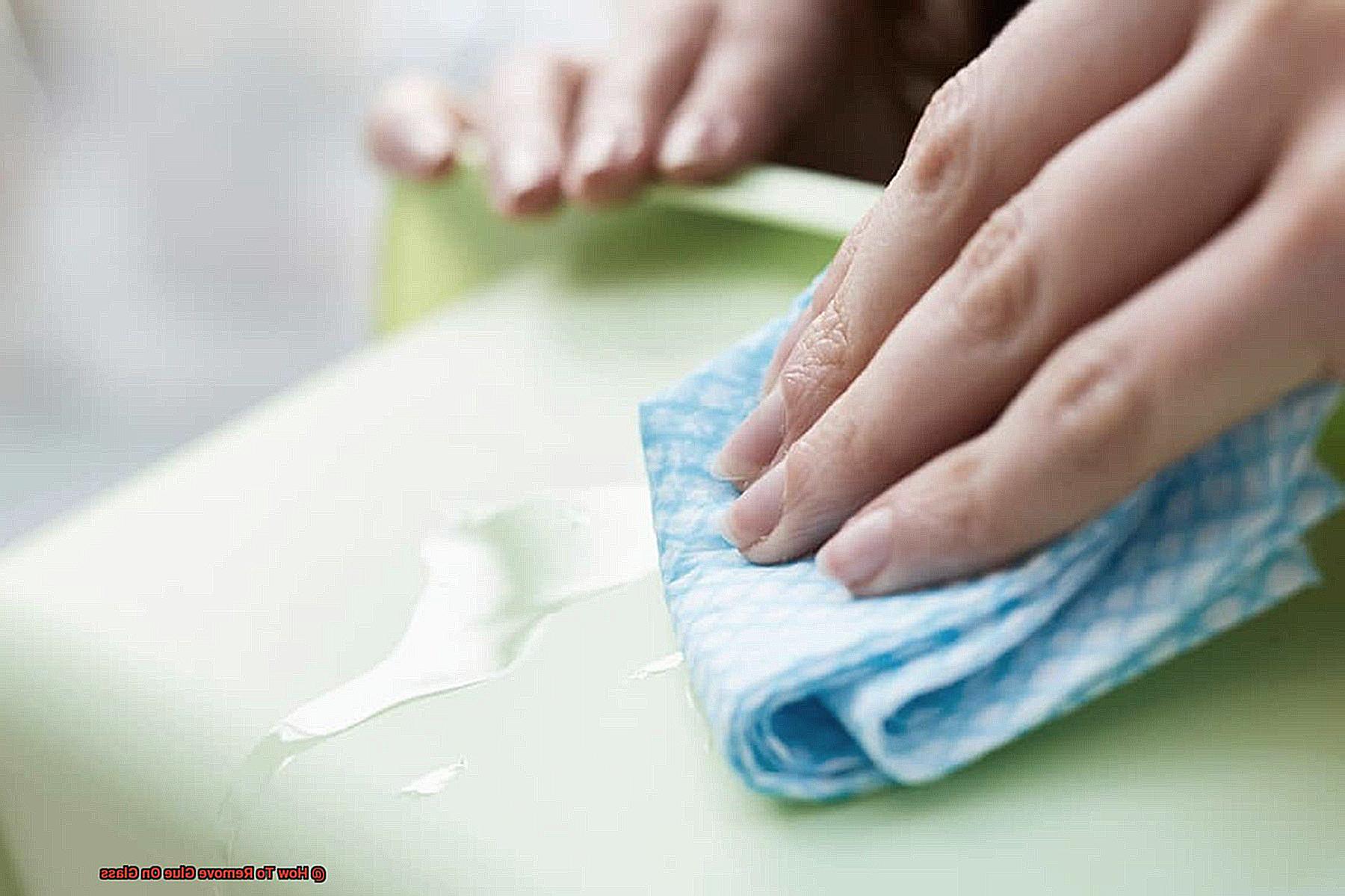
Again, use this method carefully to avoid sudden temperature changes that could crack or shatter the glass. It’s important to note that some types of glue may leave a residue even after removal.
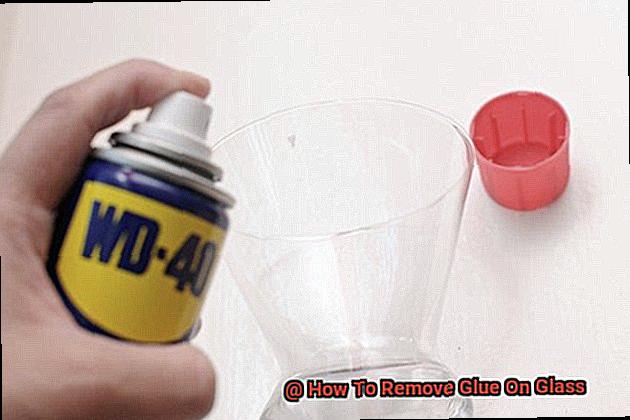
In this case, using an adhesive remover or rubbing alcohol can help dissolve any remaining residue on the glass surface.
So, identifying the type of glue on your glass surface is essential in determining the best removal method.
Removing Glue with Solvents
Solvents are powerful chemicals that dissolve adhesives, making them easy to wipe away. But before getting started, it’s essential to test the solvent on a small area first to avoid any damage or discoloration to the glass.
Acetone is a commonly used solvent for removing glue from glass. This potent solvent can quickly dissolve many types of adhesives, making it a go-to option for those tough glue stains.
To use acetone, simply apply a small amount onto a cloth or cotton ball and rub it onto the glue until it dissolves. Remember to wear gloves and work in a well-ventilated area to avoid inhaling any fumes.
If you’re worried about damaging your glass surface, rubbing alcohol is an excellent alternative to acetone. It’s milder and less likely to cause any harm to the glass.
- Soak a cotton ball or cloth with rubbing alcohol and apply it to the glue until it dissolves.
- For those who prefer natural solutions, vinegar can also be used as an effective solvent for removing glue from glass.
- Mix equal parts of vinegar and water and soak a cloth or cotton ball in the solution.
- Apply it to the glue and let it sit for several minutes before wiping it away.
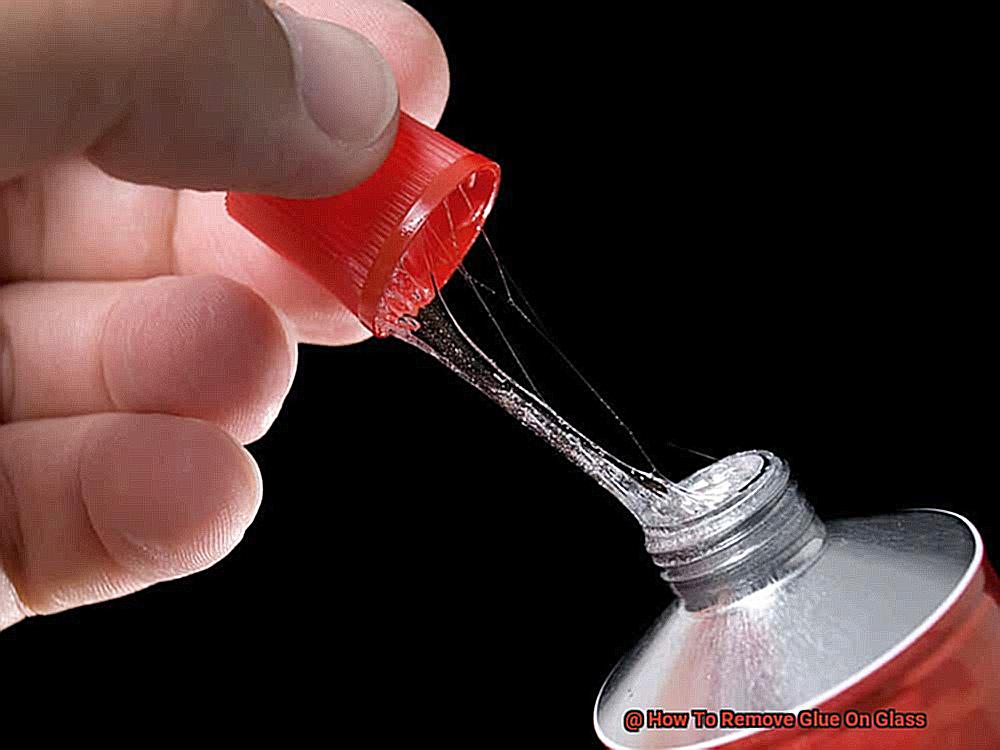
Although not as strong as acetone or rubbing alcohol, vinegar is still effective and safe to use. In conclusion, removing glue with solvents can be an easy way to get rid of those pesky residue marks from your glass surfaces.
But always remember to take proper safety precautions and test the solvent on a small area first to avoid any damage or discoloration.
Scraping Away Glue with a Tool
Sometimes, scraping it away with a tool is the most effective method.
But before you grab any old tool, it’s crucial to choose the right one to avoid causing damage to the glass. One option is a plastic scraper, which is less likely to scratch or damage the glass surface compared to metal tools.
Look for a sharp-edged scraper that can effectively remove the glue without leaving any traces behind. It’s like selecting the perfect knife for slicing through vegetables – you want one that’s sharp enough to do the job but not too sharp that it damages your cutting board.
If the glue is particularly thick, then a razor blade scraper might be a better option. However, it’s crucial to exercise extreme caution when using this tool as it can easily scratch or damage the glass surface if not used properly.
Think of it like shaving – you want to hold the blade at a 45-degree angle and use light pressure when scraping away the glue. Before using any scraping tool, ensure the glass surface is wet.
You can moisten the surface by using a spray bottle filled with water or a mixture of water and vinegar. Moistening the surface makes it easier to scrape away the glue without scratching or damaging the glass.
It’s like softening butter before spreading it on bread – it makes the process much smoother and more manageable.
So, scraping away glue with a tool can be an effective method for removing stubborn residue from glass surfaces.
Softening Glue with Heat
The solution to your problem is just a few degrees of heat away.
Softening glue with heat is a widely used method that works wonders on hot melt glue, the type of adhesive that softens when exposed to heat. With just a hair dryer or heat gun, you can quickly and easily remove even the toughest glue stains from your glass surface.
Before you begin, make sure your glass surface is clean and dry. Then, set your heat source to a medium setting and hold it about 6 inches away from the glue.
Gently move the heat source back and forth over the glue for a few minutes until the glue starts to soften. Once the glue has been softened, take a scraper or plastic credit card and gently lift the glue off the glass surface.
Be careful not to scratch or damage the glass while doing this. If there are any tough spots of glue that won’t come off, apply more heat and try again.
Always wear gloves and eye protection when using a heat gun to avoid burns or eye damage.
Tips and Precautions for Removing Glue on Glass
If you’ve ever tried to remove glue from a glass surface, you know it can be a frustrating and difficult task.
With these tips and precautions, you can safely and effectively remove glue from your glass surfaces without causing any damage.
Protect Your Hands
Before you begin, always wear gloves to protect your hands from the harsh chemicals in some glue removal agents. This will ensure that you don’t come into direct contact with the agents and avoid any skin irritation.
Identify the Type of Glue
It’s important to identify the type of glue you’re dealing with before attempting to remove it. Different types of glue require different removal methods, so be sure to do your research beforehand.
For example, acetone is effective for removing superglue, but it can damage other types of glue or even the glass itself.
Follow Instructions Carefully
When using chemical solvents or adhesive removers, always follow the instructions carefully and use the agent sparingly. Apply the solvent to a cloth or cotton swab rather than directly onto the glass, as this will help avoid any damage.
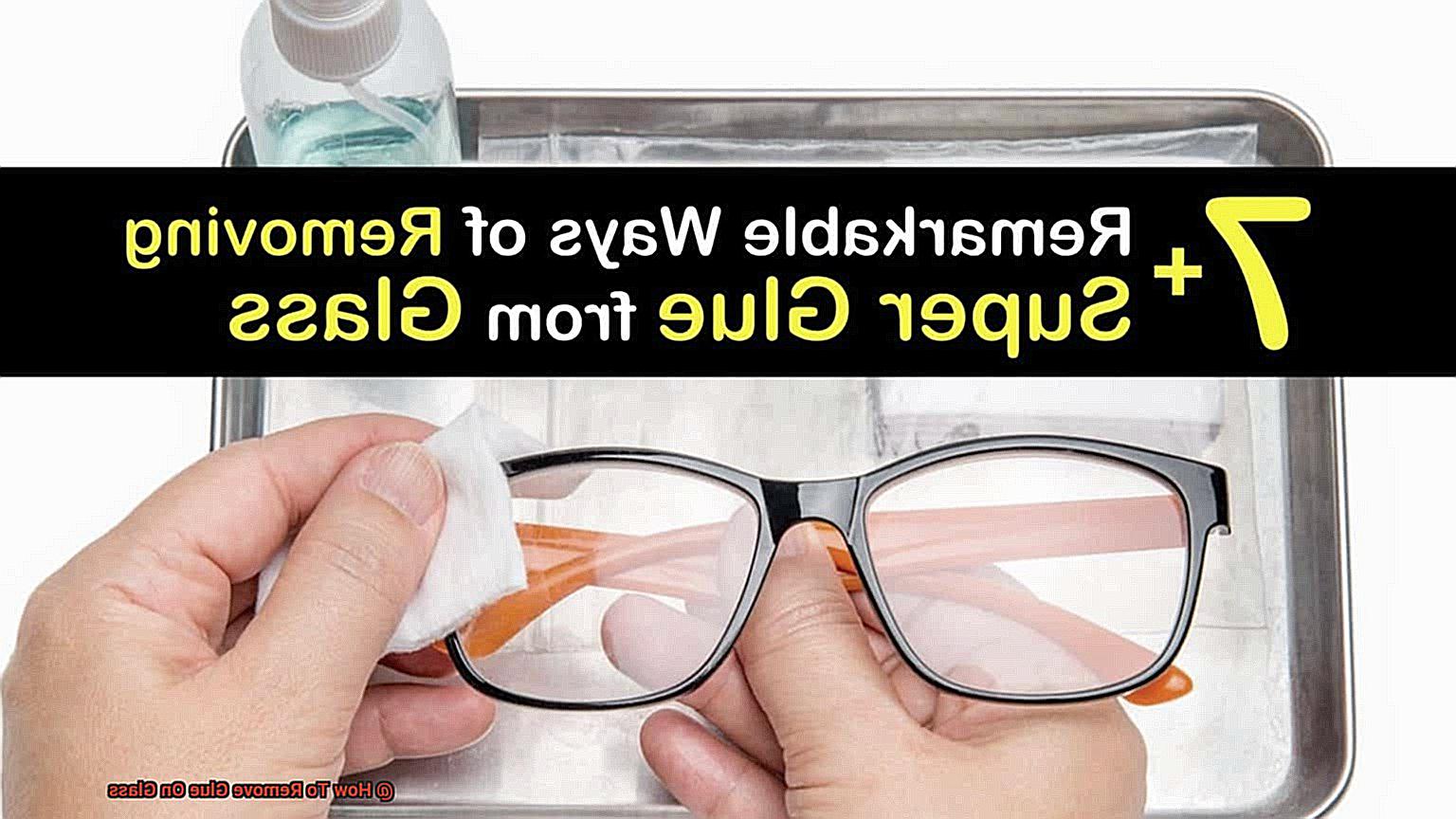
It is also important to test the solvent on a small area first to ensure it doesn’t cause any discoloration or damage.
Use a Gentle Touch
If you’re using a scraper or razor blade to remove the glue, make sure to hold it at a low angle to avoid scratching the glass surface. It’s important to use a gentle touch while scraping to avoid damaging the glass.
If you prefer not to use chemical solvents, soaking the glass in warm soapy water can help loosen the glue and make it easier to scrape off with a plastic scraper or credit card.
Thoroughly Clean the Surface
After removing the glue, be sure to thoroughly clean the glass with a gentle cleaner and soft cloth to remove any residue. Avoid using abrasive materials such as steel wool or harsh chemicals that could scratch or damage the glass.
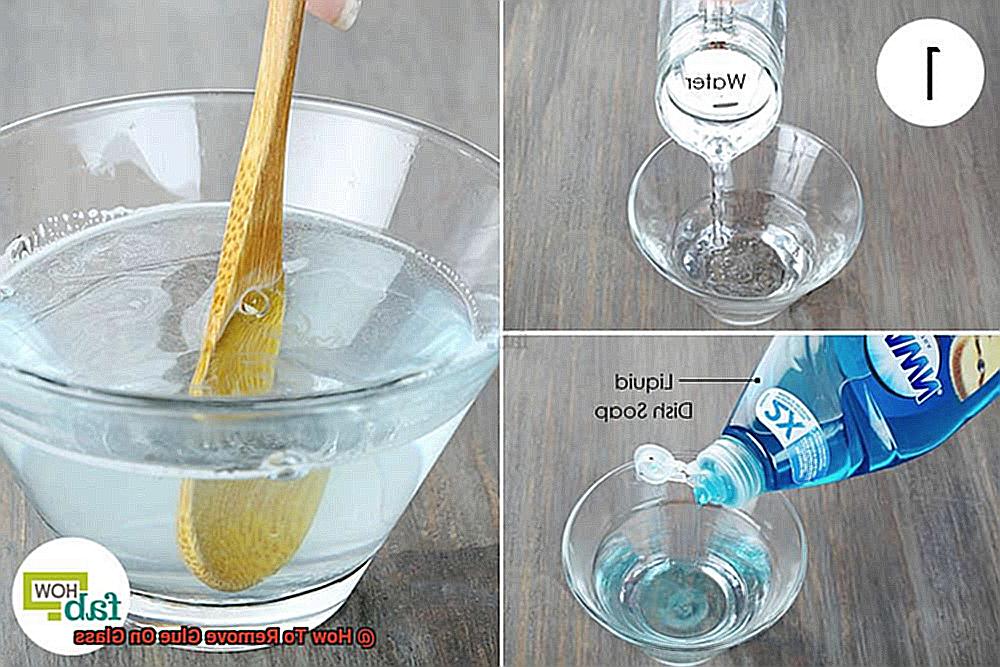
D9pXpcPHSSQ” >
Conclusion
Removing glue from glass can seem like a daunting task, but with the right tools and techniques, it can be done safely and effectively.
The first step is identifying the type of glue you’re dealing with since different adhesives require different removal methods. Solvents like acetone or rubbing alcohol can dissolve most adhesives, making them easy to wipe away.
However, testing the solvent on a small area first is crucial to avoid damage or discoloration. Scraping away glue with a plastic scraper or razor blade can also work well, but it’s important to choose the right tool for the job and use a gentle touch to avoid scratching or damaging the glass surface.
Softening glue with heat is another method that works well on hot melt glue. When removing glue from glass surfaces, taking necessary precautions such as wearing gloves and eye protection while working in a well-ventilated area is essential.
Thoroughly cleaning the surface after removing the glue is also crucial.


